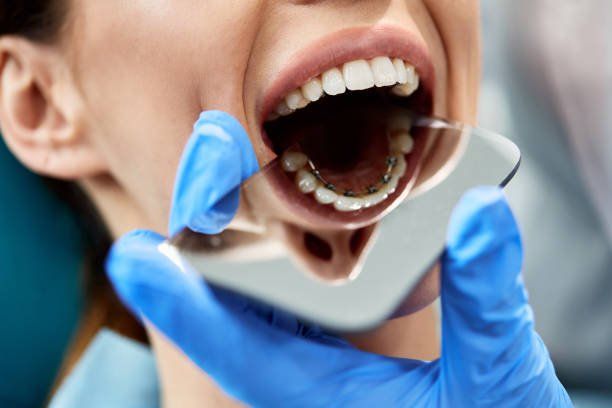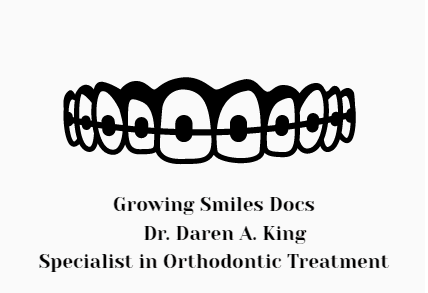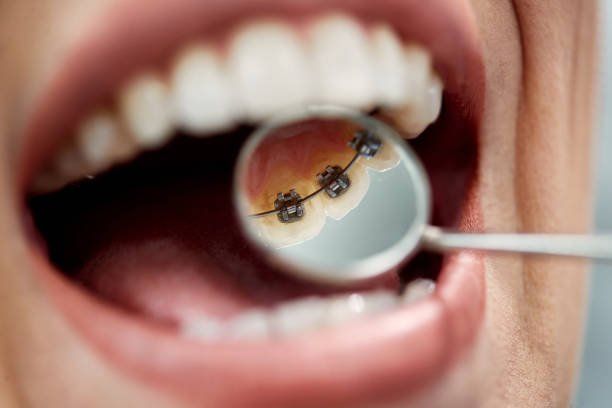Lingual brackets - An invisible method of tooth correction
- By Dr. Daren King
- •
- 06 Jan, 2022
- •
How Lingual Braces Helps You Straighten You Teeth

It is no secret that straight teeth are an attractive feature. However, while traditional braces may be the most common way to correct crooked teeth, they do not work for everyone. Lingual braces are an alternative that can get you straighter teeth without anyone noticing.
Unlike traditional metal brackets, lingual braces attach behind the tooth on the inside of your mouth so no one can tell you have them. These braces are an excellent option for adults who want to straighten their teeth without making it obvious. Here’s what you should know about hidden braces.
Treatment with Lingual Braces
Like any other dental procedure, treatment with hidden braces begins with a diagnostic workup. Your brooklyn orthodontist will take x-rays and measurements to determine if you are a good candidate for this type of treatment. The orthodontist's records are crucial in the treatment process because they allow your orthodontist to plan the treatment and anticipate any potential problems.
If your teeth are only mildly crooked, lingual braces may be the right solution for you. However, traditional metal braces may be a better option if you have a more severe misalignment. In either case, your orthodontist will work with you to determine the best treatment for your teeth.
Once he determines that you are a good candidate, he’ll schedule an appointment for your braces installation procedure.
This is where things get interesting because you won’t be getting visible braces. Lingual braces are hidden behind teeth using specialized adhesives or special wires that don’t show.
Some people worry that this might make the braces less effective, but that’s not the case - they work in the same way as traditional metal braces do.
Pros and Cons of Hidden Braces
Lingual braces may seem like a god-sent if you want to straighten your teeth without anyone knowing. However, before you take the plunge, there are several things you should know about them.
Pros
Hidden braces offer numerous benefits, including:
1. They’re invisible: Because they adhere to the back of the teeth, lingual braces are invisible to everyone - even you!
2. They’re more comfortable: Since they don’t rub against your gums as traditional metal braces do, lingual braces are often more comfortable.
3. They’re less likely to cause injury: If you happen to fall or hit your mouth while wearing traditional metal braces, the brackets and wires are more likely to cause injury. That’s not a problem with hidden braces.
4. They’re perfect for adults: Hidden braces are a good option if you didn’t have braces as a child or if your teeth have shifted since then.
5. They’re perfect for people with dental veneers: If you have dental veneers, traditional metal braces can damage them. Lingual braces don’t cause this problem.
6. They’re perfect for people who play sports: If you’re active and play sports, lingual braces are a good option because they’re less likely to get in the way.
7. Challenging to clean: Whether you have traditional metal braces or hidden braces, it's essential to clean your teeth daily. However, it can be a little more challenging to get all the food and plaque out from behind the brackets and wires with hidden braces due to access challenges.
Cons
Although most people who opt for hidden braces tend to be pleased with their choice, there are some drawbacks you should consider before you decide whether or not this is the best option for you.
1. Lingual braces are more expensive than traditional metal ones: Hidden braces often cost about 15 to 30 percent more than traditional ones, and in most cases, they're not covered by insurance.
2. They aren't suitable for everyone: Hidden braces work best for individuals who have mild to moderate dental crowding. If you have a severe case of misaligned teeth or bite problems, lingual braces may not be the best option for you.
3. You need to be patient: It typically takes longer to correct alignment issues with hidden braces than it does with traditional metal braces.
4. They're more challenging to get used to: Due to the constant contact with the tongue, lingual braces take a little longer to get used to than traditional braces. But most people adjust within a few weeks.
Wrapping Up
As you can see, lingual braces have many benefits that traditional braces just can't provide. They're not the best option for everyone, but they could be right for you if you have mild to moderate crowding issues and are willing to wait longer than with metal braces.
If lingual braces do sound like your perfect solution, contact Growing Smile Dentistry Brooklyn or book an appointment with us online today.
Contact us now for a healthy, gorgeous smile!
CONTACT
1302 Carroll Street Brooklyn, NY 11213 Orthodontist (718) 363-8701 Email contact.us@growingsmilesdocs.comCONTACT
Crown Heights Office 1302 Carroll Street Brooklyn, NY 11213 Park Slope Office 131 6th Avenue Brooklyn, NY 11217 Orthodontist (718) 363-8701 Fax (718) 221-1905HOURS
- Mon, Fri
- Closed
- Tue - Thu
- Appointment Only
- Sat - Sun
- Closed

